Raytheon demonstrates critical Joint All Domain Command and Control capability for US military
Friday, 01 July 2022 09:14 During the Defense Department's Valiant Shield 22 exercise this month, Raytheon Intelligence and Space, a Raytheon Technologies (NYSE: RTX) business, successfully demonstrated the ability to collect data on a simulated sea-based threat and then share targeting solutions with distributed defense systems across the Western Pacific Ocean - a key test of the company's Joint All Domain Command and Co
During the Defense Department's Valiant Shield 22 exercise this month, Raytheon Intelligence and Space, a Raytheon Technologies (NYSE: RTX) business, successfully demonstrated the ability to collect data on a simulated sea-based threat and then share targeting solutions with distributed defense systems across the Western Pacific Ocean - a key test of the company's Joint All Domain Command and Co AFRL space leader commends team, transitions to new role
Friday, 01 July 2022 09:14 "I'll miss the "ah ha" moments," said Col. Eric Felt, director of the Air Force Research Laboratory Space Vehicles Directorate, who will depart AFRL for an assignment at the Pentagon in July.
Felt became the Space Vehicles director in July 2018 and has a dual-hatted role as commander of AFRL's Phillips Research Site, both located at Kirtland AFB. He will be taking on the job of the directo
"I'll miss the "ah ha" moments," said Col. Eric Felt, director of the Air Force Research Laboratory Space Vehicles Directorate, who will depart AFRL for an assignment at the Pentagon in July.
Felt became the Space Vehicles director in July 2018 and has a dual-hatted role as commander of AFRL's Phillips Research Site, both located at Kirtland AFB. He will be taking on the job of the directo NASA aircraft conducting atmospheric studies over DC to Baltimore
Friday, 01 July 2022 09:14 A NASA aircraft will fly over the I-95 corridor from Washington to Baltimore and Hampton, Virginia, in support of an atmospheric campaign in the mid-Atlantic region between July 5 and 16, 2022.
The four-engine turboprop P-3 aircraft, based at NASA's Wallops Flight Facility in Virginia, will fly five days during the 12-day period at altitudes from 1,000 to 10,000 feet.
Each flight dur
A NASA aircraft will fly over the I-95 corridor from Washington to Baltimore and Hampton, Virginia, in support of an atmospheric campaign in the mid-Atlantic region between July 5 and 16, 2022.
The four-engine turboprop P-3 aircraft, based at NASA's Wallops Flight Facility in Virginia, will fly five days during the 12-day period at altitudes from 1,000 to 10,000 feet.
Each flight dur Researchers measure atmospheric water vapor using open-air spectroscopy
Friday, 01 July 2022 09:14 Researchers have shown that a new mid-infrared spectrometer can precisely measure the ratios of different forms of water - known as isotopologues - in atmospheric water vapor through open air in a little over 15 minutes. Isotopologue ratios, which can be affected by land-based water evaporation and plant transpiration, are used to develop models of climate change and to understand how water is t
Researchers have shown that a new mid-infrared spectrometer can precisely measure the ratios of different forms of water - known as isotopologues - in atmospheric water vapor through open air in a little over 15 minutes. Isotopologue ratios, which can be affected by land-based water evaporation and plant transpiration, are used to develop models of climate change and to understand how water is t The Fingertip Galaxy: Reflecting Euclid in art
Friday, 01 July 2022 08:30 Video:
00:04:21
Video:
00:04:21
“After Euclid’s lifetime, it will just be floating in space. What if future beings found Euclid? How would they know anything about the humanity of the people?” – Tom Kitching, lead scientist of Euclid’s VIS instrument.
The team behind ESA’s Euclid mission has come together to create something special – a personal and collective galaxy-shaped fingerprint painting that has been attached to the spacecraft ready to launch into space. The collaborative nature of the artwork reflects the collaborative nature of the Euclid project overall; in both cases, people have come together to build something unique.
The Fingertip Galaxy was
Venus orbiter, lunar constellation and exoplanets telescopes among candidates as China selects new space science missions
Friday, 01 July 2022 07:02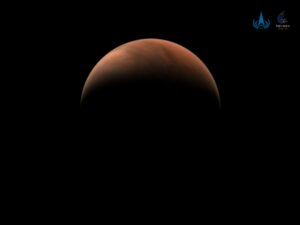
The Chinese Academy Sciences is preparing to select a new batch of space missions from proposals to study Earth, the Sun and solar system, and the deeper universe as part of a "New Horizons Program.
Earth from Space: Patagonia
Friday, 01 July 2022 07:00
The Copernicus Sentinel-3 mission captured this impressive, wide-angled view of Patagonia at the southern end of South America, as well as the Falkland Islands (Malvinas).
House appropriators reduce proposed budget for FAA commercial space office
Thursday, 30 June 2022 23:40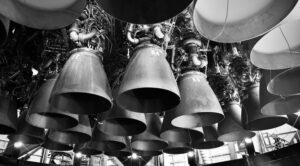
House appropriators eliminated most of a proposed budget increase for the FAA’s commercial space transportation office while also directing the agency on spaceports and cooperation with another agency on spaceflight investigations.
Kepler books orbital transfer vehicle for next launch
Thursday, 30 June 2022 22:59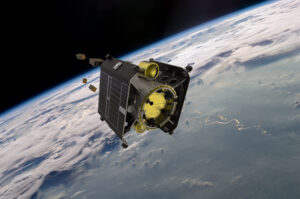
Canada’s Kepler Communications said June 30 it plans to use D-Orbit’s orbital transfer vehicle for the next two satellites in its low-data-rate constellation.
The post Kepler books orbital transfer vehicle for next launch appeared first on SpaceNews.
Another Webb telescope instrument gets the 'go for science'
Thursday, 30 June 2022 20:12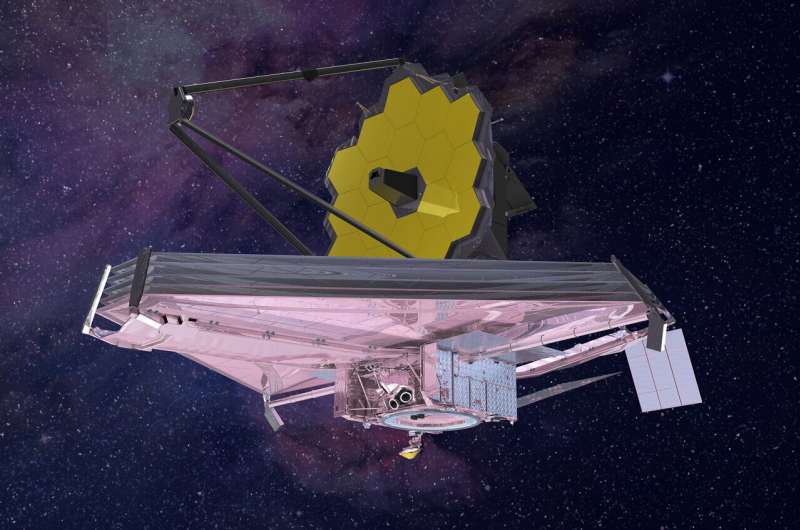
The second of NASA's James Webb Space Telescope's four primary scientific instruments, known as the Mid-Infrared instrument (MIRI), has concluded its postlaunch preparations and is now ready for science.
The last MIRI mode to be checked off was its coronagraphic imaging capability, which uses two different styles of masks to intentionally block starlight from hitting its sensors when attempting to make observations of the star's orbiting planets. These customized masks allow for scientists to directly detect exoplanets and study dust disks around their host stars in a way that's never been done before.
Along with Webb's three other instruments, MIRI initially cooled off in the shade of Webb's tennis-court-size sunshield to about 90 Kelvin (minus 298 degrees Fahrenheit, or minus 183 degrees Celsius). To perform its intended science meant dropping to less than 7 Kelvin—just a few degrees above the lowest temperature matter can reach—by using an electrically powered cryocooler. These extreme operating temperatures allow for MIRI to deliver mid-infrared images and spectra with an unprecedented combination of sharpness and sensitivity.
Smart earbud will measure how astronauts sleep
Thursday, 30 June 2022 19:18
Sleep is important for our health and well-being, and bad sleep can negatively impact our attention span, memory, decision-making skills, creativity and judgment.
Astronauts living in zero gravity with an artificial day-night cycle have trouble maintaining a natural circadian rhythm and normal sleep patterns. In fact, sleep is what astronauts complain about the most.
To avoid the negative short- and long-term side effects of poor sleep, Aarhus University's Centre for Ear-EEG has developed a technology that can monitor an astronaut's sleep in a non-invasive and discreet manner via so-called "ear-EEG" (ear-ElectroEncephaloGraphy). The technology, along with Danish astronaut Andreas Mogensen, will travel to the International Space Station ISS to examine the differences between human sleep patterns on earth and in space.
The project is called "Sleep in Orbit."
"Sleep is a kind of biomarker for our health and well-being. In fact, a great many diseases also impact the way we sleep, including a wide range of psychiatric disorders and neurodegenerative diseases.
Two Seattle startups racing to transform next-gen space travel
Thursday, 30 June 2022 17:02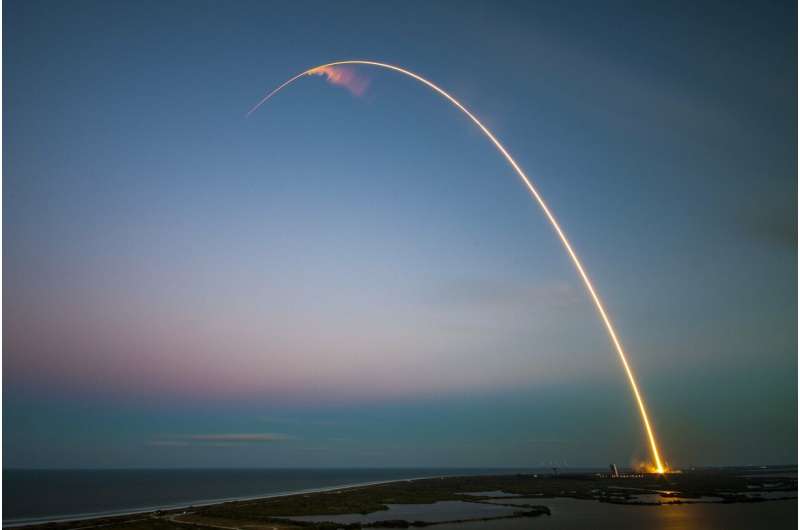
The phrase "nuclear energy" conjures images of large steaming towers or Tony Stark's arc reactor from the iconic "Iron Man" movies. But two Seattle-based startups are designing nuclear technologies small enough to pick up and carry that, thanks in part to buy-in from the Defense Department, they hope will fuel a new generation of spaceships.
Seattle's Avalanche Energy and Ultra Safe Nuclear Corporation received undisclosed amounts of funding from the Pentagon's Defense Innovation Unit in May to further develop two different approaches to small-scale nuclear power.
Avalanche is pushing the boundaries of nuclear fusion while Ultra Safe aims to revolutionize nuclear radioisotope batteries, like those that power Mars rovers. Both companies are expected to deliver functional prototype spacecraft to the Pentagon by 2027.
"Nuclear is an interesting area because traditionally that's been mainly in the realm of government," said U.S. Air Force Maj. Ryan Weed, the program manager for the Defense Innovation Unit's nuclear propulsion and power program. The unit—the Pentagon's outpost in Silicon Valley—works exclusively with private sector companies to adapt emerging technologies for military use.
After six decades of materials science research, nuclear fuels are relatively safe and are being embraced in the private sector.
The path of most resistance could help limit bone loss during spaceflight
Thursday, 30 June 2022 14:00
Astronauts that have returned after spaceflights over three months may show signs of incomplete bone recovery even after one year on Earth, but adding in more resistance-based exercises during spaceflight may help limit bone loss. The small study, published in Scientific Reports, on 17 international astronauts found that while the shinbone partially recovers, the sustained bone losses after one year are equivalent to ten years of normal age-related bone loss on Earth.
Steven Boyd and colleagues imaged 17 astronauts (14 male, three female) before spaceflight, at return to Earth, and after six and 12 months of recovery. They conducted bone scans on the tibia (shinbone) and radius (forearm) to calculate the resistance of the bone to fracture (failure load), bone mineral in the bone tissue, and tissue thickness. The authors also recorded exercises such as cycling, treadmill running and deadlifting completed by astronauts in-flight and post-flight.
One year after flight the median results for 16 of the astronauts showed incomplete recovery of the shinbone. Median shinbone failure load, measuring bone strength, was reduced by 152.0 newtons from 10,579 newtons at pre-flight to 10,427 newtons after one year.
Copernicus Sentinel-1 maps Bangladesh flood
Thursday, 30 June 2022 14:00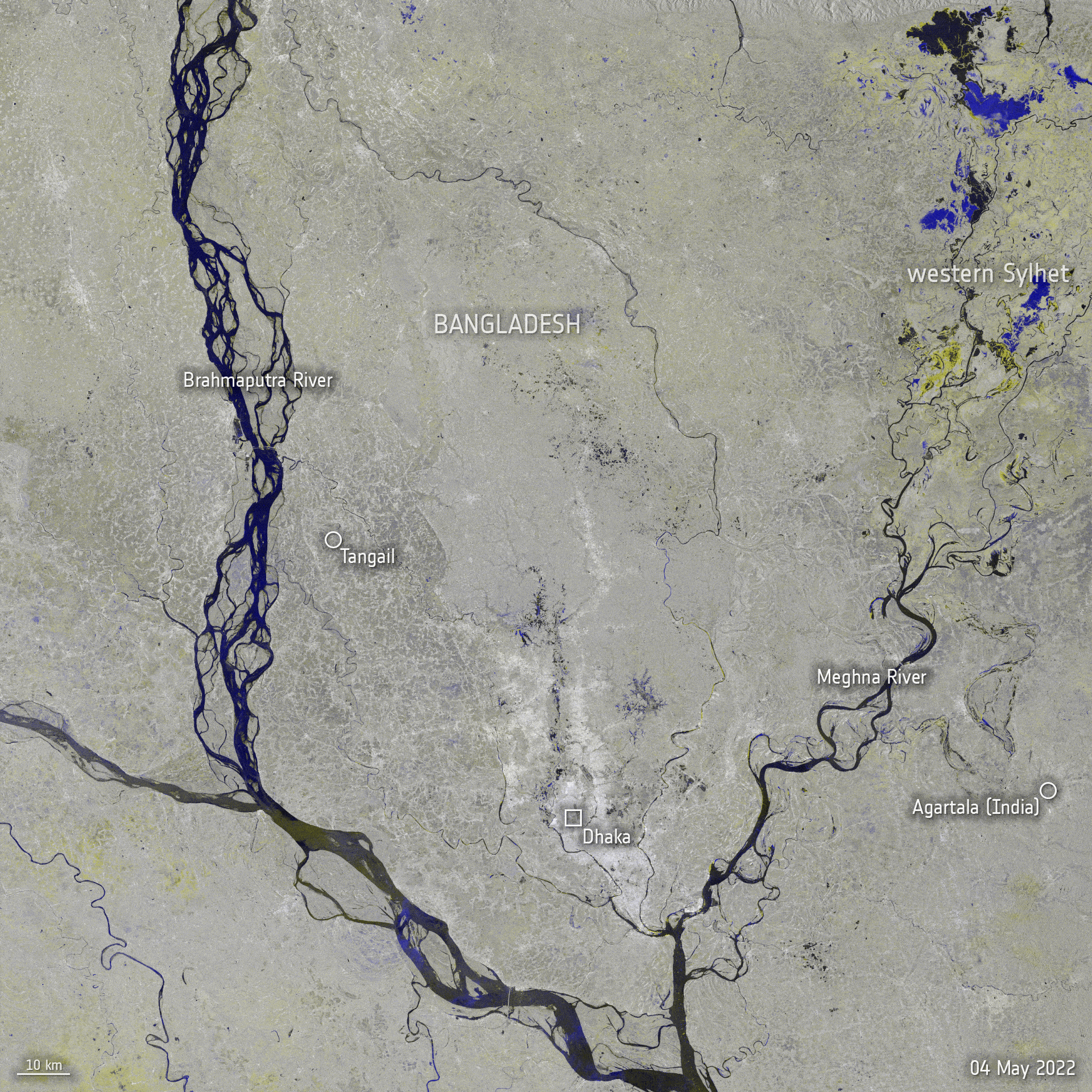 Image:
Copernicus Sentinel-1 maps Bangladesh flood
Image:
Copernicus Sentinel-1 maps Bangladesh flood X-Bow Systems to Deliver World's First Rocket Factory In-A-Box to US Air Force Research Laboratory
Thursday, 30 June 2022 10:34 X-Bow Systems Inc. (X-Bow), a new non-traditional small business supplier of Solid Rocket Motors (SRMs) and defense technologies, has announced that its Pathfinder I, a mobile energetics factory demonstration unit (aka Rocket Factory In-A-Box) will be delivered this month to the US Air Force Research Laboratory (AFRL) in Edwards, California. Pathfinder I is part of X-Bow's groundbreaking, low-co
X-Bow Systems Inc. (X-Bow), a new non-traditional small business supplier of Solid Rocket Motors (SRMs) and defense technologies, has announced that its Pathfinder I, a mobile energetics factory demonstration unit (aka Rocket Factory In-A-Box) will be delivered this month to the US Air Force Research Laboratory (AFRL) in Edwards, California. Pathfinder I is part of X-Bow's groundbreaking, low-co 
